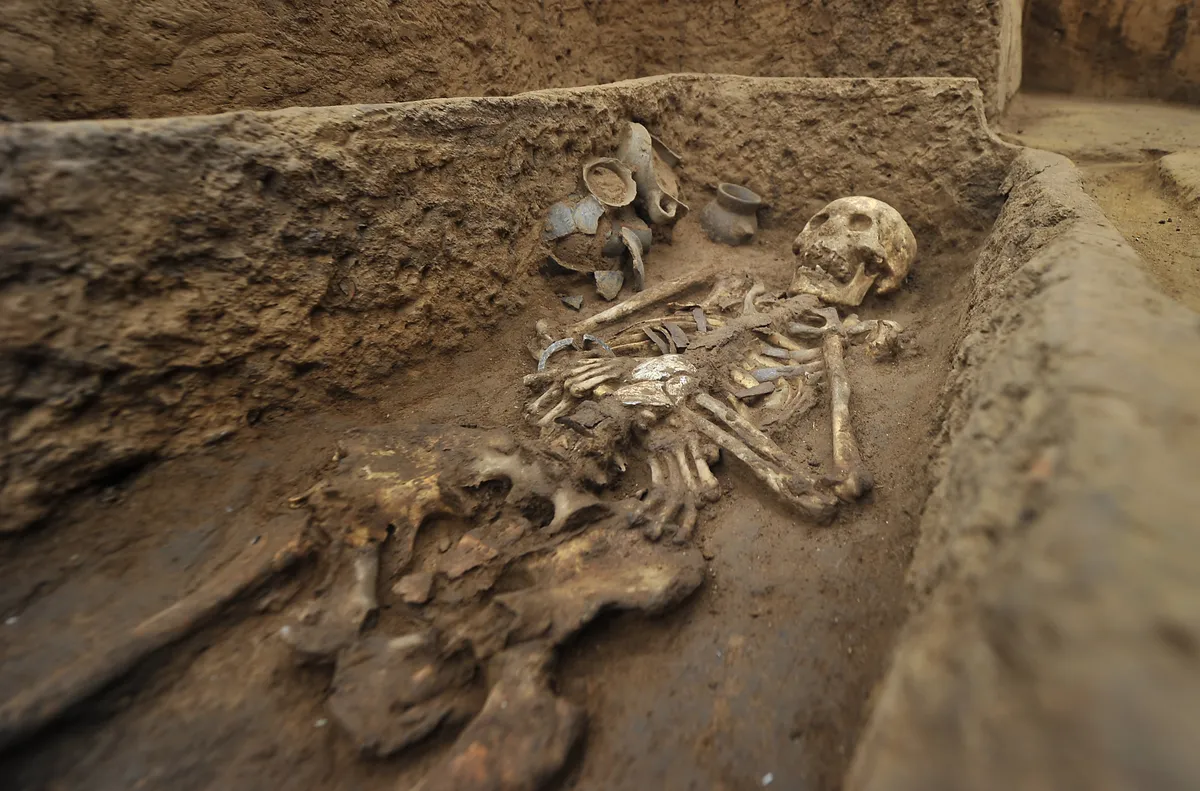
The excavation began as part of a routine geological survey in early May 2023. A group of geologists, led by Dr. Emily Carter, was investigating the canyon’s geological formations when they stumbled upon an unusual set of bones protruding from the rocky ground. Initial assessments indicated that the remains were far larger than those of any known human or animal, prompting the team to conduct a more thorough investigation.
As the researchers carefully excavated the site, they uncovered several skeletons, some measuring over 3 meters in height. The bones exhibited physical characteristics unlike any known species, featuring elongated limbs and unusually large skulls. Carbon dating and preliminary analysis suggest that these remains could be over 10,000 years old, prompting questions about who these giants were and how they lived in a time long before recorded history.
The implications of this discovery are profound. Archaeologists have long theorized about the existence of ancient civilizations that may have inhabited North America, but the existence of such large skeletal remains challenges conventional understandings of human history. Dr. Carter stated, “This discovery could rewrite what we know about early human societies. It raises questions about their culture, their technology, and their interactions with the environment.”
Local Native American tribes have expressed a deep connection to the findings, viewing them as part of their ancestral heritage. Many tribal leaders believe that the giant skeletons may belong to a legendary race mentioned in their oral traditions. “These giants are part of our stories,” said Chief Michael Running Deer of the Havasupai tribe. “Their discovery validates our history and provides a tangible link to our past.”

However, the discovery has not been without controversy. Some skeptics question the authenticity of the findings, suggesting that the bones could be misidentified remains of large animals or even elaborate hoaxes. To address these concerns, the research team has invited independent experts to verify their methods and findings, emphasizing their commitment to scientific integrity.
As news of the discovery spreads, the Grand Canyon has become a focal point for both scientific inquiry and public interest. Tours and educational programs are being organized to inform visitors about the significance of the findings and the ongoing research efforts. The site has already attracted attention from media ou